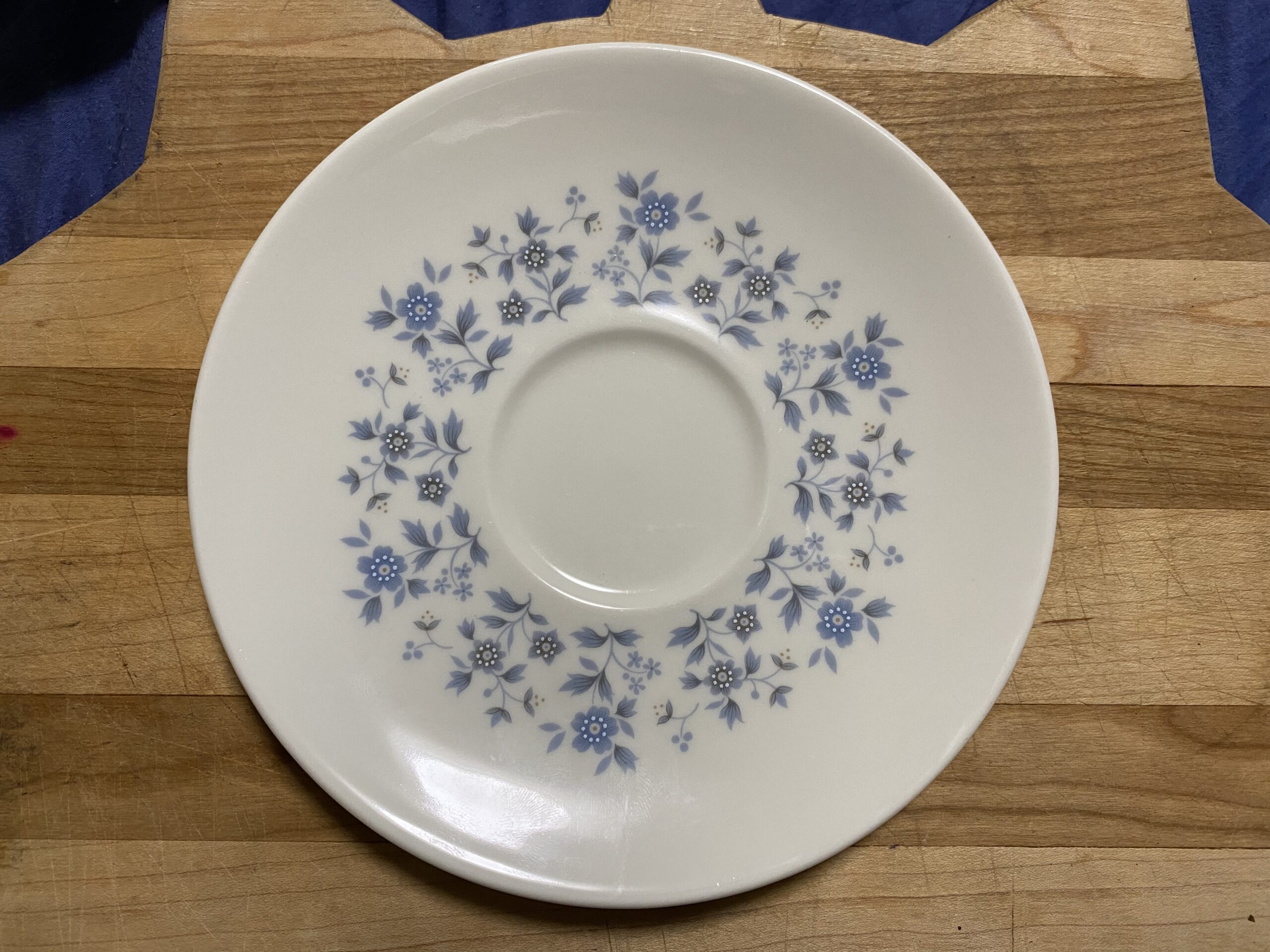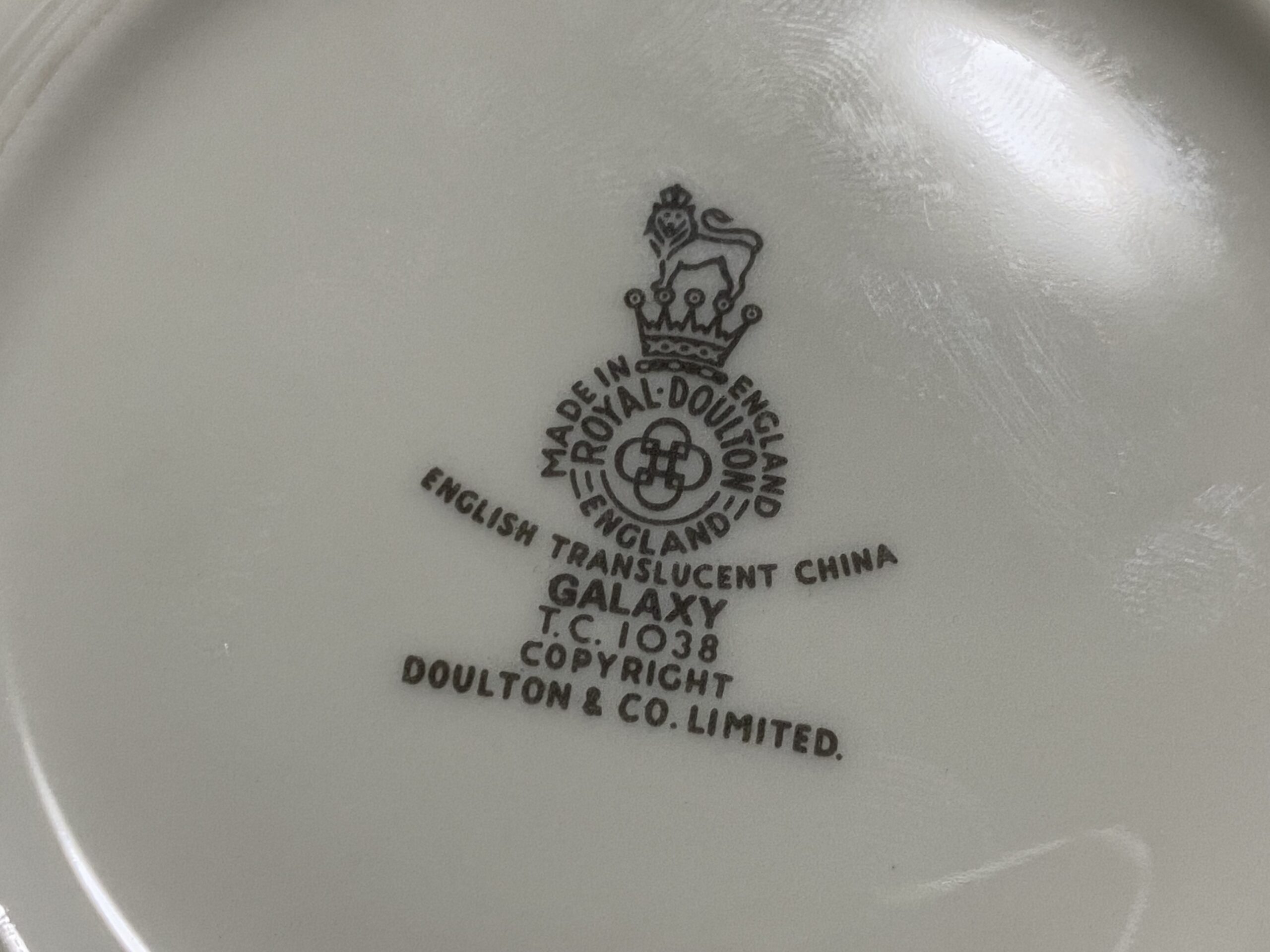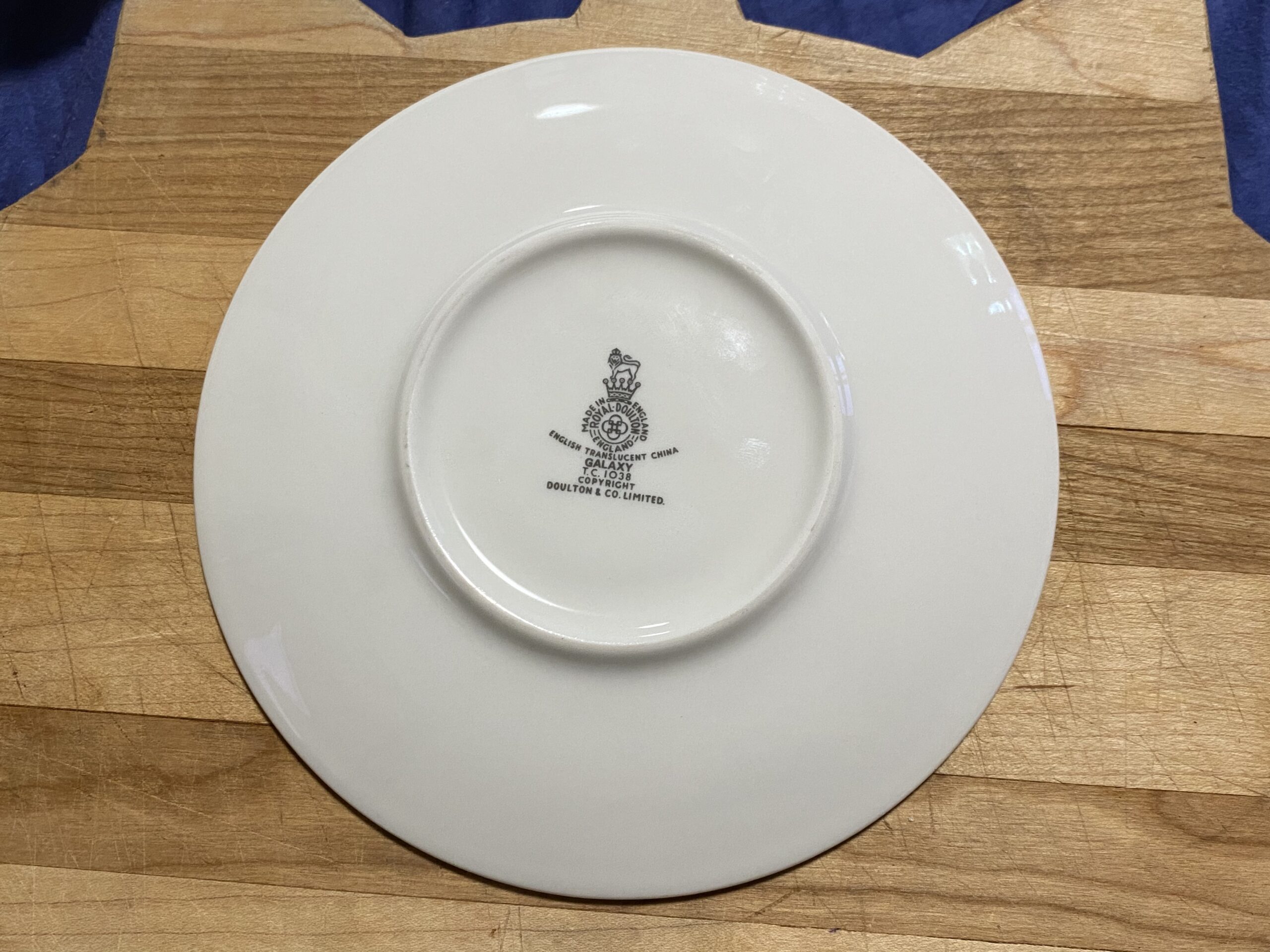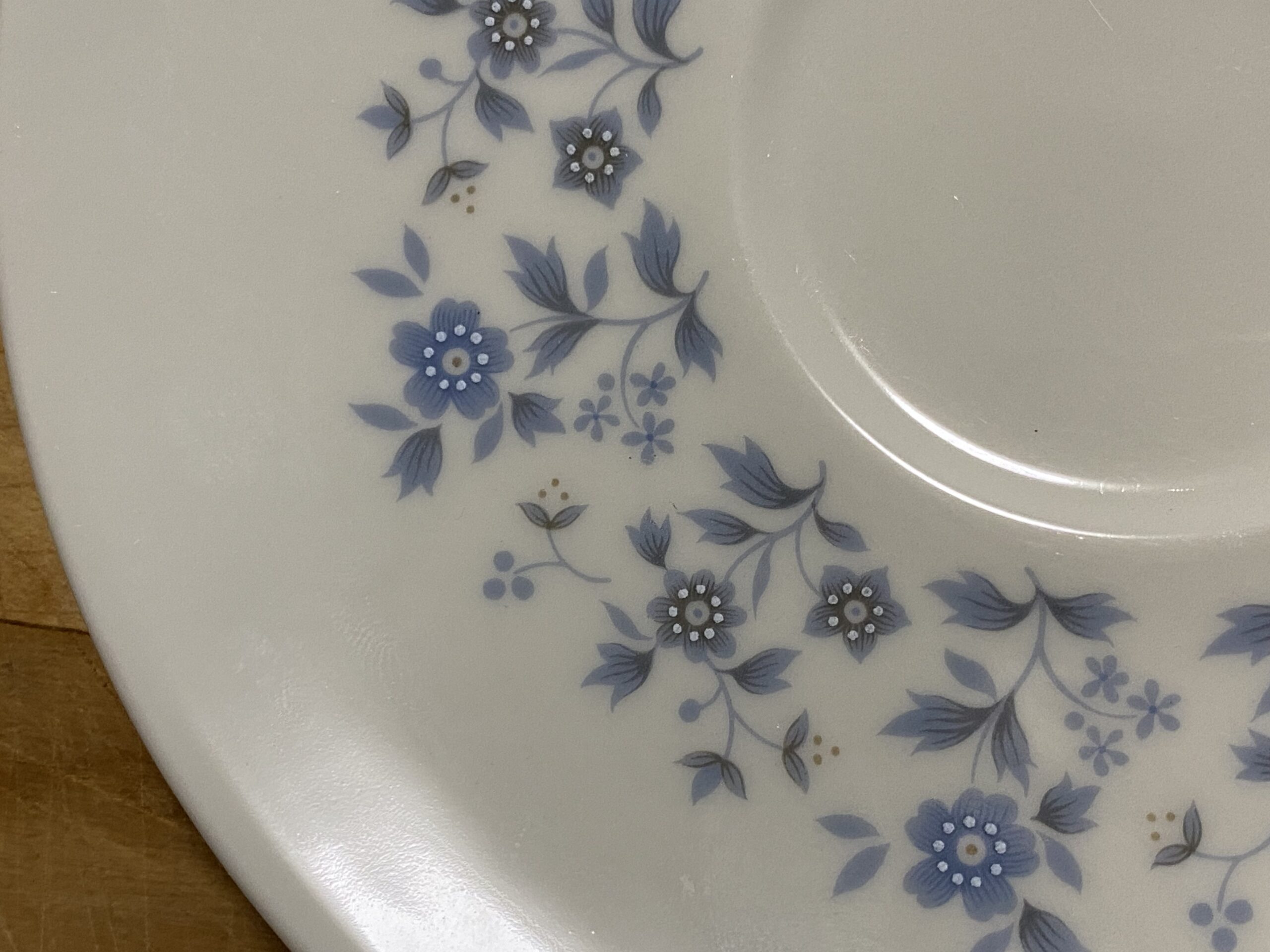Royal Doulton Galaxy Saucer with blue floral design (c. 1960-1974): 45,000 ppm Lead on the food surface.
Reading #1) Center of food surface of dish (white)
- Lead (Pb): 37,800 +/- 1,100 ppm
- Barium (Ba): 100 +/- 63 ppm
- Zinc (Zn): 50 +/- 25 ppm
- Iron (Fe): 792 +/- 177 ppm
- No other metals detected
Reading #2) Blue floral decoration
- Lead (Pb): 45,000 +/- 1,300 ppm
- Cadmium (Cd): 26 +/- 11 ppm
- Chromium (Cr): 1,067 +/- 418 ppm
- Copper (Cu): 61 +/- 39 ppm
- Zinc (Zn): 514 +/- 55 ppm
- Iron (Fe): 1,322 +/- 210 ppm
- Cobalt (Co): 1,899 +/- 184 ppm
- No other metals detected
Reading #3) Backmark of dish (Logo area)
- Lead (Pb): 40,300 +/- 1,200 ppm
- Copper (Cu): 64 +/- 38 ppm
- Zinc (Zn): 236 +/- 39 ppm
- Iron (Fe): 2,102 +/- 246 ppm
- Cobalt (Co): 874 +/- 137 ppm
- No other metals detected
For those new to this website
Background updated September 2022:
Tamara Rubin is a Federal-award-winning independent advocate for consumer goods safety and a documentary filmmaker. She is also a mother of Lead-poisoned children. Tamara’s sons were acutely Lead-poisoned in August of 2005. She began testing consumer goods for toxicants in 2009 and was the parent-advocate responsible for finding Lead in the popular fidget spinner toys in 2017. Her work was also responsible for two CPSC product recalls in the summer of 2022, the Jumping Jumperoo recall (June 2022) and the Lead painted NUK baby bottle recall (July 2022) and was featured in an NPR story about Lead in consumer goods in August of 2022. Tamara uses XRF testing (a scientific method used by the U.S. Consumer Product Safety Commission) to test consumer goods for toxicants (specifically heavy metals), including Lead, Cadmium, Mercury, Antimony, and Arsenic. All test results reported on this website are science-based, accurate, and replicable. Items are tested multiple times, to confirm the test results for each component tested and reported on. Please click through to this link to learn more about the testing methodology used for the test results discussed and reported on this website.
Never Miss an Important Article Again!
Join our Email List






